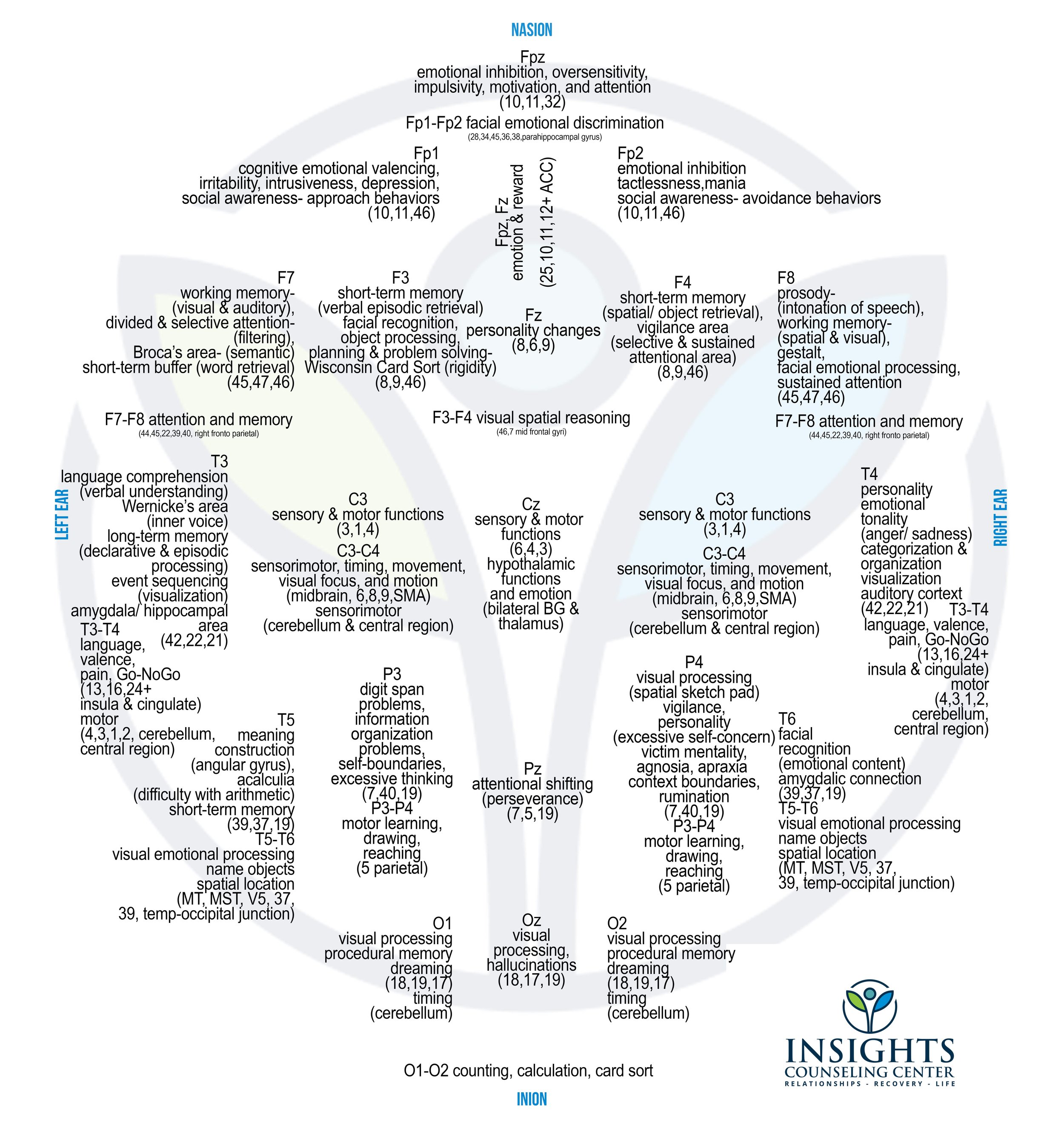Brodmann Areas: An Intro Guide to the Function of 10/20 Sites
Understanding Brodmann areas and exploring the functions of the different 10/20 sites can provide valuable insights into how our brains work and how various functions are localized in specific regions.
What are Brodmann Areas?
Brodmann areas are regions of the cerebral cortex that were mapped out by the famous German neurologist, Korbinian Brodmann, in the early 20th century. These areas are numbered and help us understand the different functions of the brain by associating them with specific anatomical regions. The 10/20 system, within the field of electroencephalography (EEG), is a way to determine the location of electrodes on the scalp that correspond to specific Brodmann areas.
Frontal Pole (FP) FPz, FP1, and FP2
Located in the frontal polar area, these sites are associated with executive functions, decision-making, and social behavior. They play a crucial role in regulating our emotions, guiding our actions, and maintaining healthy relationships.
Frontal (F) F7/F8 and F3/F4
The frontal lobe is involved in higher cognitive functions such as problem-solving, attention, and working memory. It also contributes to personality traits and emotional regulation, influencing our interactions with others.
Temporal (T) T3/T4, and T5/T6
The temporal lobe is involved in various functions, including auditory processing, language comprehension, and memory formation. It provides the foundation for communicating, understanding speech, and storing memories.
Central (C) C3/C4 and Cz
Situated over the central region of the brain, these sites are linked to motor control, sensory processing, and body awareness. They help facilitate movement, coordination, and the integration of sensory information, enabling us to navigate the physical world.
Parietal (P) P3/4 and Pz
The parietal region allows you to perceive and make sense of sensory information: touch, taste, and temperature. It plays a vital role in our ability to understand the world around us and interpret sensory information accurately.
Occipital (O) O1/O2 and Oz
Located over the occipital lobe, O1 and O2 are associated with visual processing, perception, and object recognition. These areas help us make sense of the visual stimuli we encounter and play a fundamental role in our understanding of the world.
Embrace the Possibilities: Discover Neurofeedback Therapy
Understanding the intricate functions of Brodmann areas and their corresponding 10/20 sites can offer valuable insights into the fascinating workings of our brains.
With neurofeedback therapy, we have the opportunity to balance and regulate our brainwaves naturally, opening the path to a more harmonious and fulfilling life.
If you are interested in a qEEG brain map and are considering neurofeedback therapy, reach out to request more information or schedule a free consultation call so we can answer your questions.

